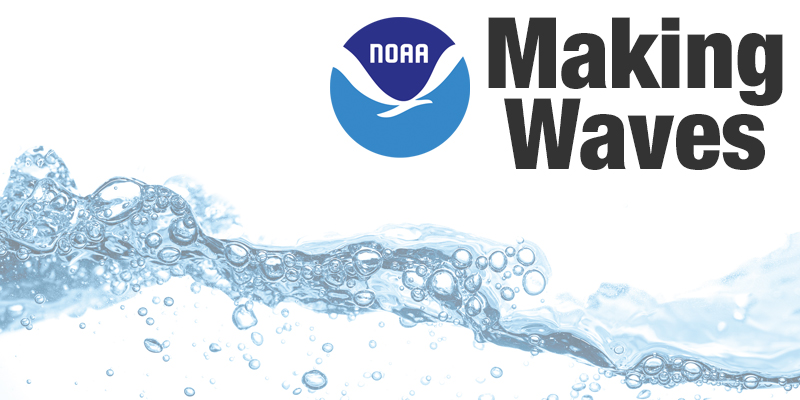SoundScapes
Making Waves: Episode 121
In this episode: in less than three minutes, this video presents the basics about multibeam and side scan sonar, including a visualization that shows how sonar data is used to make products like nautical charts.
Transcript
(Sound of a submarine 'ping')
NARRATOR: You probably know this sound from the movies. It's a submarine sonar 'ping.' Sonar is used to 'see' what lies beneath the waves. Today's high-tech sonar systems used by NOAA send out rapid sound pulses that bounce off the sea floor and back to scan what's below. These soundings produce amazingly detailed pictures of the unseen sea floor. Multibeam echo sounders, shown here, measure the depth of the sea floor. Hydrographers use the multibeam soundings to create nautical charts and produce colorful maps of the underwater terrain. In general, red is used to show shallow depths and blue or purple for deeper depths. Sidescan sonar, the device trailing the ship shown here, captures black and white imagery that helps to identify submerged wrecks and obstructions. Here's a visualization created by a NOAA hydrographer that's beautiful to watch and will give you a good idea of how hydrographers use sophisticated computer programs to transform sonar imagery into nautical charts and other products that help keep mariners safe at sea.
CREDITS:
- Visualization created by Ian Colvert, NOAA Coast Survey Navigation Response Branch
- Sidescan sonar animation courtesy of the U.S. Navy

From corals to coastal science, catch the current of the ocean with our audio and video podcast, Making Waves.
Subscribe to Feed | Subscribe in iTunes